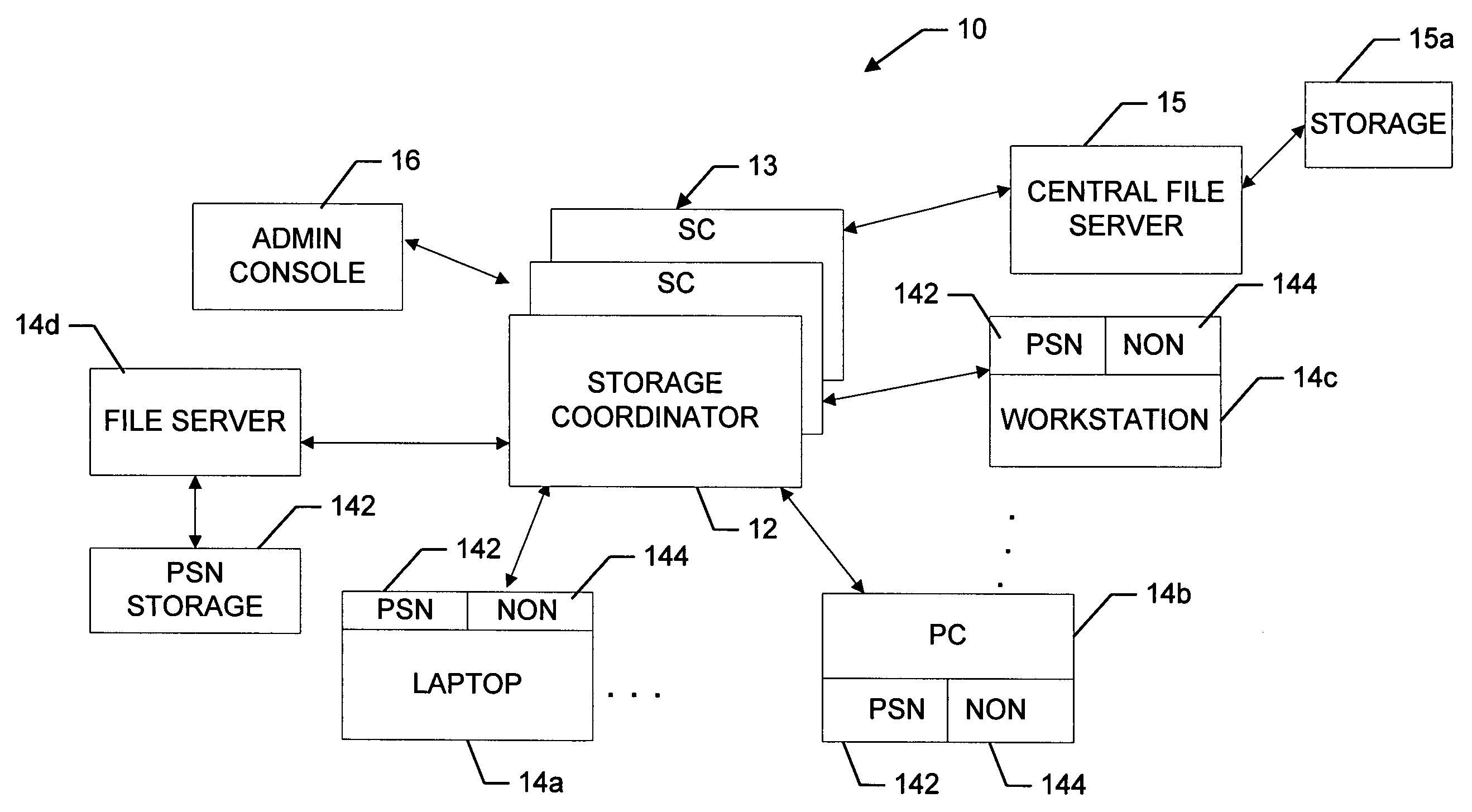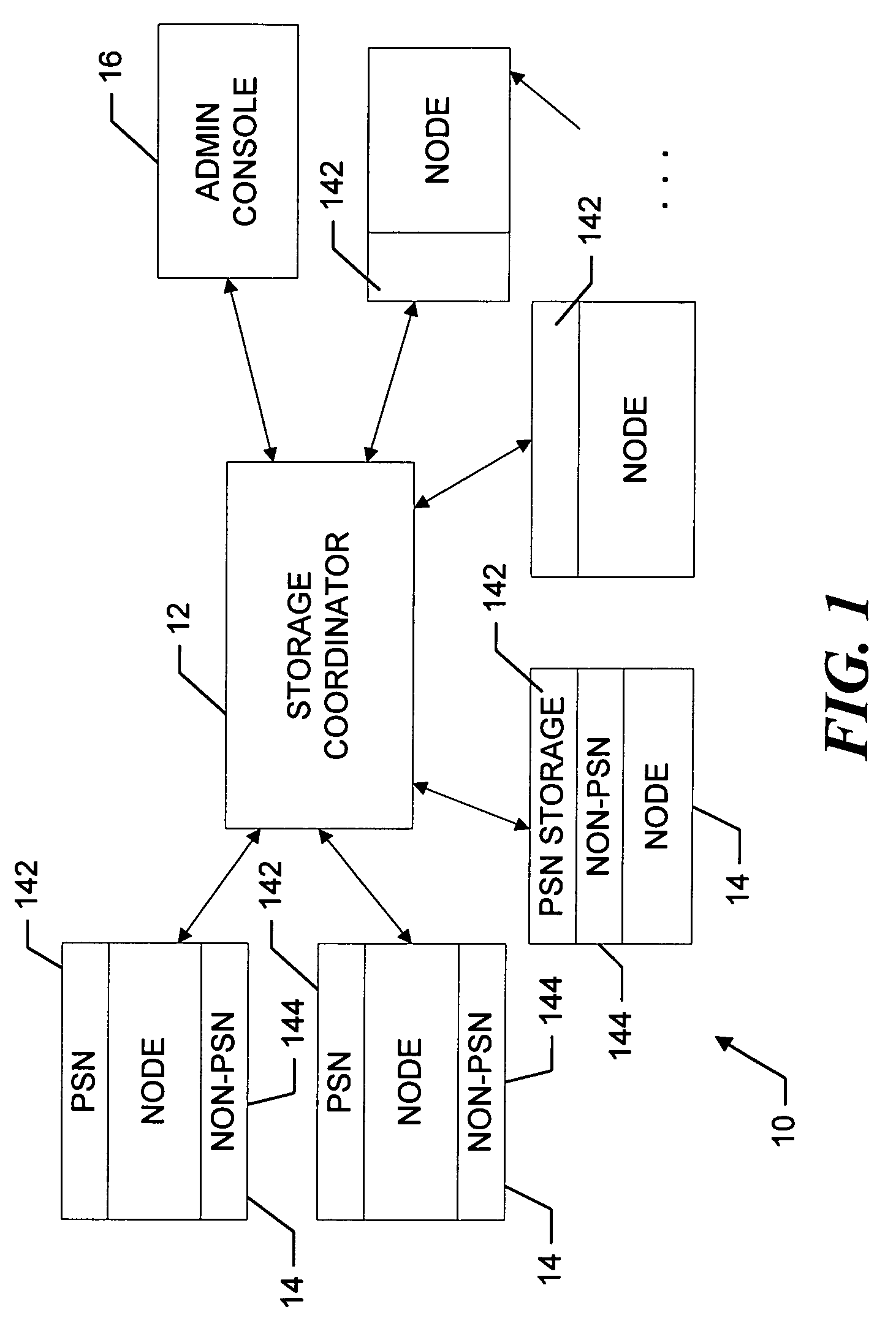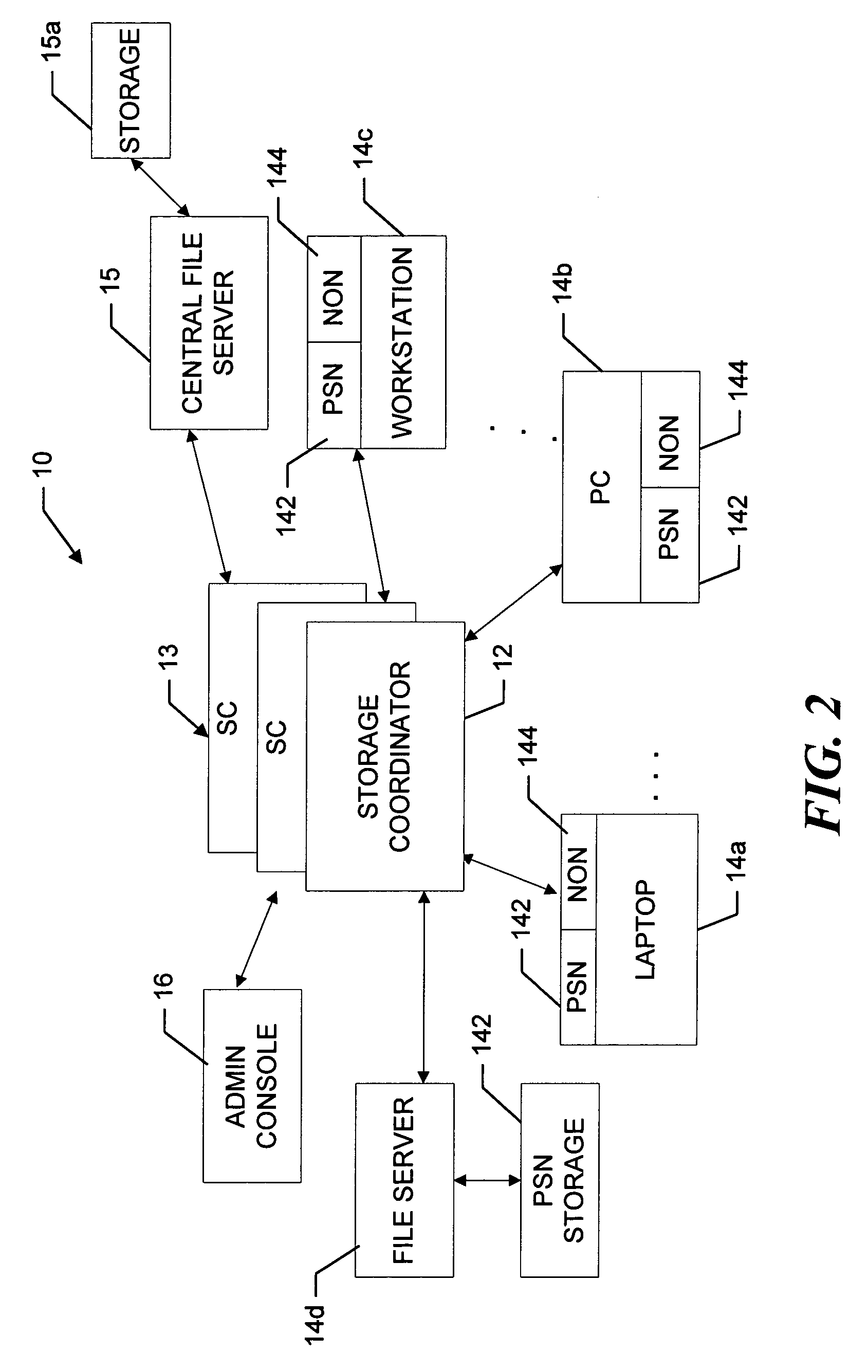Peer-to-peer enterprise storage
a technology of enterprise storage and peer-to-peer storage, which is applied in the field of distributed data storage systems, can solve the problems of increasing the storage capacity of centralized storage systems, increasing the complexity of systems, and potential bottlenecks at the interface between the lan and the file storage system, so as to minimize the amount of network bandwidth devoted, maximize the extent, and balance the storage load
- Summary
- Abstract
- Description
- Claims
- Application Information
AI Technical Summary
Benefits of technology
Problems solved by technology
Method used
Image
Examples
Embodiment Construction
[0033]I. The System
[0034]Referring now to FIGS. 1 and 2, a peer storage network (“PSN”) 10 includes a storage coordinator 12 that manages file storage and retrieval operations on distributed storage resources that consist of otherwise free portions 142 of storage media 140, i.e., hard disks, that are contained in networked storage nodes 14. The networked devices may be off-the-shelf laptops 14a, personal computers 14b, workstations 14c, and so forth, which are designed for stand-alone operation and thus include relatively large i.e., 10 or 20 gigabyte, hard drives. When a given device is connected to a network, however, most applications and files are shared, and thus, a relatively large portion of the hard drive remains free. The PSN re-uses the free portions of the hard disks for the storage of network files. One or more dedicated storage devices, such as a file server 14d, that operate under the control of the storage coordinator may also be included in the PSN.
[0035]The storage ...
PUM
 Login to View More
Login to View More Abstract
Description
Claims
Application Information
 Login to View More
Login to View More - R&D
- Intellectual Property
- Life Sciences
- Materials
- Tech Scout
- Unparalleled Data Quality
- Higher Quality Content
- 60% Fewer Hallucinations
Browse by: Latest US Patents, China's latest patents, Technical Efficacy Thesaurus, Application Domain, Technology Topic, Popular Technical Reports.
© 2025 PatSnap. All rights reserved.Legal|Privacy policy|Modern Slavery Act Transparency Statement|Sitemap|About US| Contact US: help@patsnap.com



